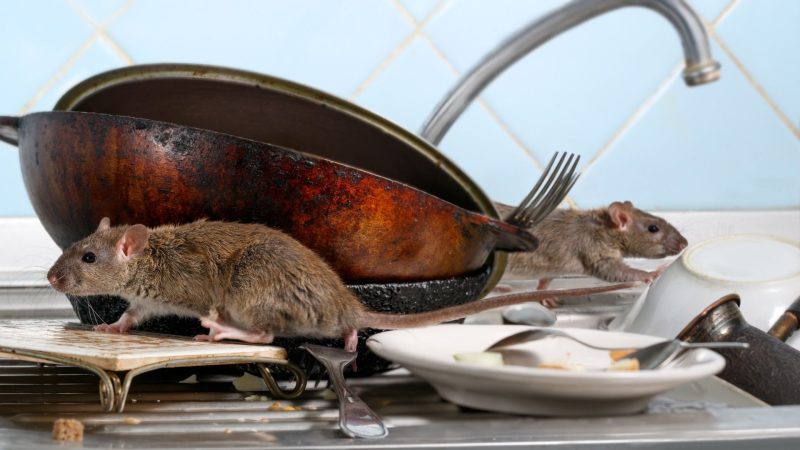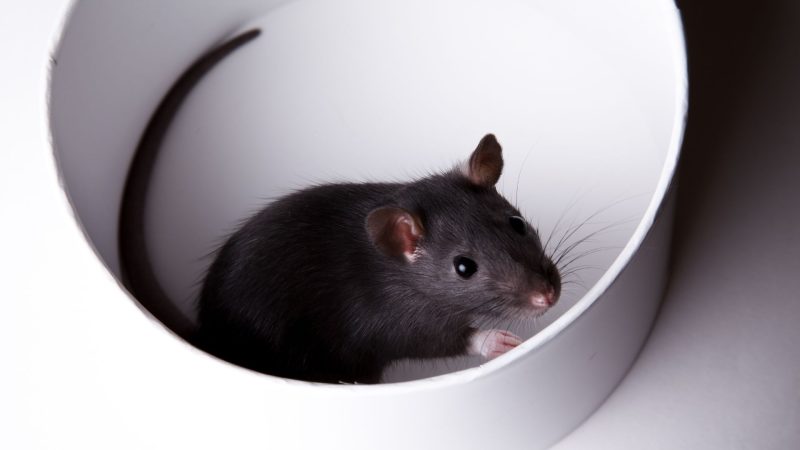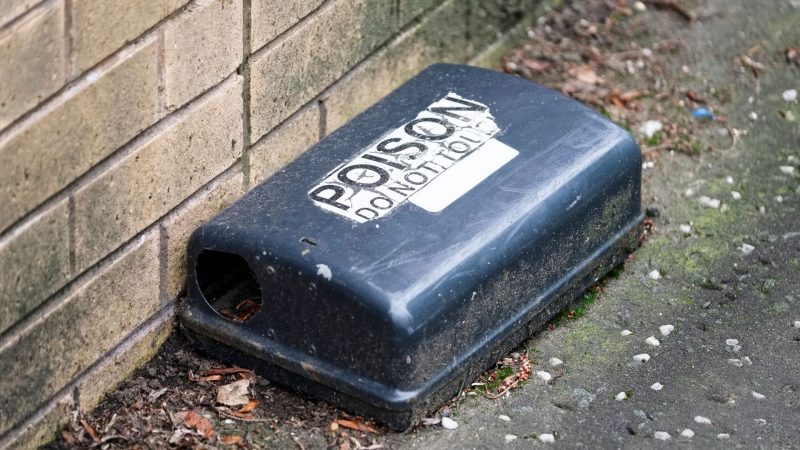Rats are more clever than most people think. When rats recognize foods that cause harm to another rat in the colony, they avoid these in the future. They also recognize when an item, such as a trap, is a new addition to their habitat and avoid it until they’ve had enough time to become familiar with it.
Why rats aren’t eating your bait? Rats are remarkably intelligent animals. They will stay away from baits that smell like the ones you used in earlier traps if they see a rat die in a trap or if they themselves manage to escape from one.
A common issue in catching rats is choosing which bait is best. This article will discuss why rats are challenging to trap and will give you a method to get rid of them.
Are One or Two Rats a Problem?

One or two rats are a problem. A single rat may produce from forty to one hundred droppings every day. These rat droppings and urine carry a lot of germs and viruses that may be passed to humans. Leptospirosis is a bacterial illness carried by rats that may be acquired by eating or drinking urine-contaminated food or water or skin contact.
How Do Rats Get In The House?
A rat can fit through a hole or crack in your house that is bigger than a half-inch in size. Seal any cracks and holes immediately to prevent rats from entering your property.
How Do I Know That It’s a Rat, Not a Mouse?

Below are some descriptions to distinguish their difference:
- Adult mice may reach a length of roughly 7 to 12 inches, including the tail, while adult rats can reach up to 18 inches, including the tail.
- Rats have a larger, hairless, scaly tail than mice, which are slender and somewhat hairy.
- A mouse’s nose is triangular, while a rat’s nose is blunt and rounded.
- Mice and rats may both be brown or gray, but rats can also be black.
- The mice’s feces are about 1/4 inch in length and have pointy ends.
- Rat droppings have blunt edges and are longer (3/4 inch).
Why Do Rats Not Take the Bait?
Rats are afraid of new things, which is called neophobia. Therefore, a new trap placed up in their pathway may cause them to get alarmed and suspicious, and they will avoid it. You may put unset bait traps initially to prevent the rats from being trap-shy. Then, after the rats have become used to their presence, bait the traps and set up the triggers.
What Is the Best Rat Bait?

Peanut butter is the best rat bait. It’s a slimy food that may clog a rat’s throat and cause them to choke. To use, apply it on the traps, and the rats will be unable to resist it.
What Is the Best Bait for Rat Traps?
It is recommended to use the baits listed below, which have been tried and tested:
- Sliced Hot Dogs: A low-cost and easy option, a hot dog may be connected to the trap using floss or thin string.
- Chocolates: This is an excellent rat attractant since it has such a pleasant, distinct fragrance. A few little pieces of chocolate tied to the traps will be enough to attract the rats.
- Pet Food: Wet cat or dog food is effective in rats. Rats usually snack on it under the cover of darkness since it is usually left out after feeding your pets. If you use pet food as trap bait, be careful to keep pets away from the traps.
What Do You Do if Your Rat Won’t Eat Poison?

Here are some suggestions for when a rat refuses to consume the poison:
Place Rat Traps at Appropriate Locations
Rats use walls and fences as their pathway. This means they’re less likely to stray into the middle of your property. As a result, traps are most effective when positioned against a wall in a low-light environment. Rat traps work best when they’re concealed along pathways that rats are likely to go.
You can place traps inside closets and beneath any furniture along the walls, such as couches, chairs, or even cupboards.
Bait Traps Based on the Appetite of a Rat
Brown rats, on the other hand, are omnivorous by nature, whereas black rats are herbivorous. A stinky cheese can attract brown rats, while black rats like peanut butter.
Rats Must Be Taught to Trust Traps
Teaching rats to trust traps is one of the most effective means of controlling the infestation. To set up a trap, position it in a location but don’t trigger it. Then, allow rats to eat for a day or two in this safe trap. Once the creatures adopt the bait as a natural part of their territory, position the traps to snap the rat that enters its pathway.
Do Rats Learn to Avoid Poison?
Rats are susceptible to the different things in their surroundings, especially traps. So, as long as they are unfamiliar with something, they will stay away from them. Also, if a rat observes another rat being killed by bait or becoming very unwell after eating poisonous bait, it will learn to avoid it.
What to Consider When Choosing the Best Rat Poison?

Poison is hazardous to children, pets, and the environment and should always be handled with caution.
Poison Types
Rat poison, often known as rodenticides, comes in a variety of forms. Calcium releasers, acute poisons, and anticoagulants are among them.
- Calcium releasers raise calcium levels in the circulation, causing the internal organs of rats to shut down.
- Acute poisons discharge a small quantity of poison into the bloodstream for a brief time.
When handling rat poisons, always wear gloves. Pet and child-safe bait stations should always be used because they restrict pets and children from getting into touch with or swallowing the poison. After you’ve used poison, keep an eye out for any deceased rats; always remove them by hand and throw them away.
Reasons Why Rats Are Hard to Trap
The rats are difficult to trap for a variety of reasons:
Rats May Be Quite Smart
The rats are naturally receptive to new things, so if a trap develops in their habitat, they will most likely avoid it. This may add to the difficulties of seeking to resolve rat infestation quickly.
Rats Move With Caution
Rats prefer to crawl around walls and fences rather than dart out into the center of a room or yard. This can make trapping them much more difficult since identifying their usual pathways is typically hard.
Rats Multiply Quickly
Rats may reproduce every three weeks, making it difficult to completely remove them. Placing and maintaining all those traps requires time and hard work.
Where to Put Rat Traps?

Look for gnawing, nesting, and droppings. Place the snare traps against the wall in quiet spots where rats seek cover and along their regular routes. Most rat travel paths, dubbed runways, follow the perimeter of a room, as rats prefer to move around in enclosed spaces rather than in the open.
How Do I Know If I Have Rats?
Signs of rat infestation:
Rat Excrement
Rats may generate up to 40 droppings every night. The droppings are brown and have a curved, spindle form, similar to rice grains. It is usually located under a stove, in the basement or attic, or on the ground.
Noises of Scratching
Rats are quick climbers that are often found in roofs, where scratching sounds may be heard at night. The rats may also be detected by a grinding sound made by their teeth.
Urine Smell
The stench of rat urine is pungent and musky. You can smell it when there are significant infestations.
Gnawed Holes
Gnawed rat holes are roughly the size of a quarter and have rough, torn edges.
Related: Rat Control: How To Get Rid of Rats?
List of Sources
Identify and Prevent Rodent Infestations. United States Environmental Protection Agency.
Prevent Rodent Infestations. (2010). Centers for Disease Control and Prevention.
Controlling the Rat – A Community Effort. (2014). New York State – Department of Health.
Rats and Mice. State of Indiana.
Timm, R. (2011). How to Manage Pests – Pests of Homes, Structures, People, and Pets: Rats. University of California.
- Bed Bug Surge 2025: How to Detect, Prevent, and Safely Eliminate Infestations in Top U.S. Cities - June 18, 2025
- Asian Needle Ants Invade US Homes: 2025 Guide to Identification, Risks, and Effective Control - June 11, 2025
- New World Screwworm Alert: How US Livestock Owners Can Prevent Outbreaks and Protect Herds [Summer 2025 Update] - June 8, 2025

